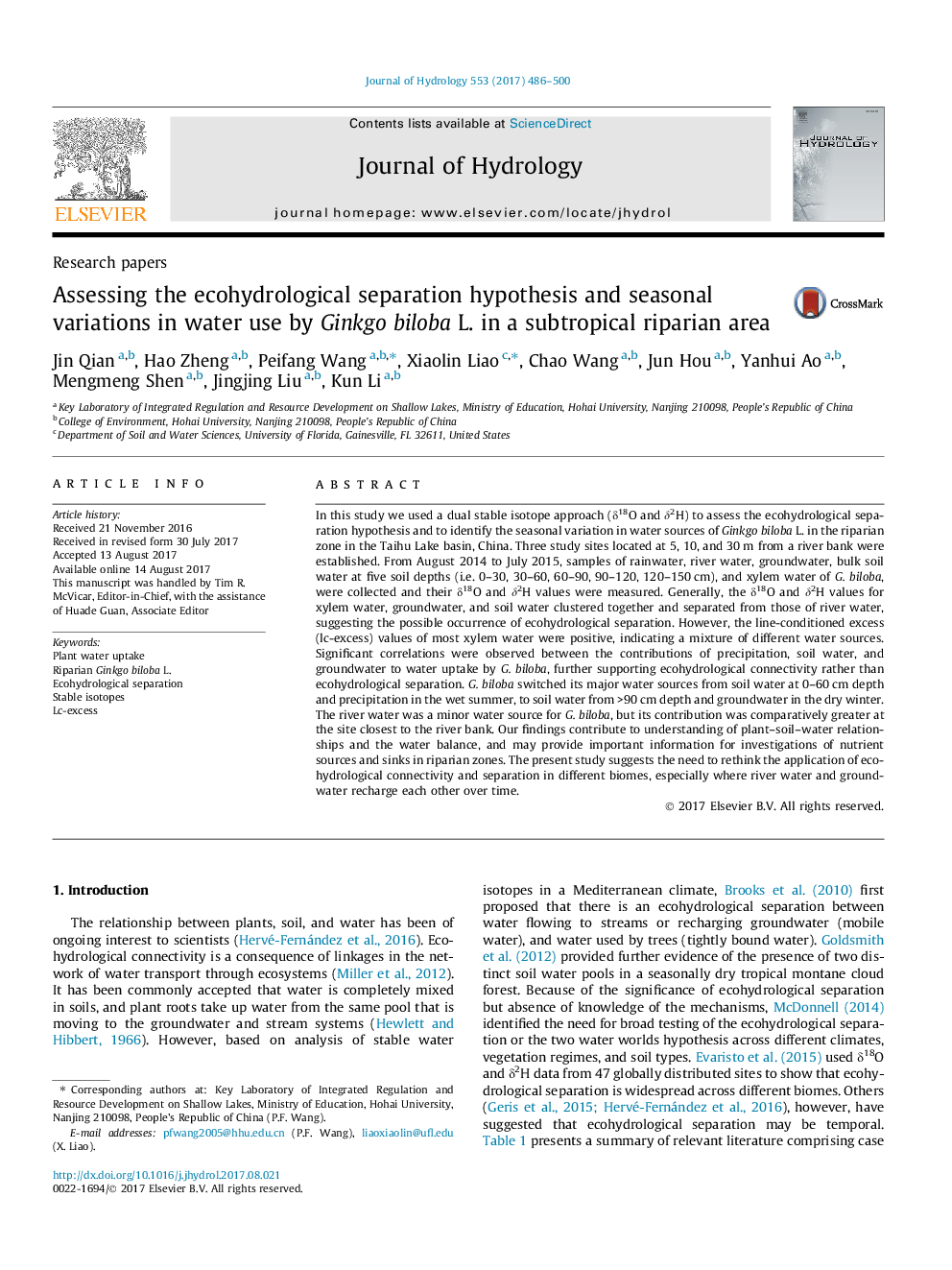| کد مقاله | کد نشریه | سال انتشار | مقاله انگلیسی | نسخه تمام متن |
|---|---|---|---|---|
| 5770833 | 1629901 | 2017 | 15 صفحه PDF | دانلود رایگان |

- Water sources for G. biloba were identified by a mass-balance model of H-O isotopes.
- No clear evidence of ecohydrological separation was observed in our study.
- G. biloba shifted water source from rainfall in wet summer to groundwater in dry seasons.
- G. biloba shifted water source from 0 to 30Â cm soil in wet summer to >90Â cm soil depth in dry seasons.
- River water contributed more to water uptake at the site closer to the river bank.
In this study we used a dual stable isotope approach (δ18O and δ2H) to assess the ecohydrological separation hypothesis and to identify the seasonal variation in water sources of Ginkgo biloba L. in the riparian zone in the Taihu Lake basin, China. Three study sites located at 5, 10, and 30 m from a river bank were established. From August 2014 to July 2015, samples of rainwater, river water, groundwater, bulk soil water at five soil depths (i.e. 0-30, 30-60, 60-90, 90-120, 120-150 cm), and xylem water of G. biloba, were collected and their δ18O and δ2H values were measured. Generally, the δ18O and δ2H values for xylem water, groundwater, and soil water clustered together and separated from those of river water, suggesting the possible occurrence of ecohydrological separation. However, the line-conditioned excess (lc-excess) values of most xylem water were positive, indicating a mixture of different water sources. Significant correlations were observed between the contributions of precipitation, soil water, and groundwater to water uptake by G. biloba, further supporting ecohydrological connectivity rather than ecohydrological separation. G. biloba switched its major water sources from soil water at 0-60 cm depth and precipitation in the wet summer, to soil water from >90 cm depth and groundwater in the dry winter. The river water was a minor water source for G. biloba, but its contribution was comparatively greater at the site closest to the river bank. Our findings contribute to understanding of plant-soil-water relationships and the water balance, and may provide important information for investigations of nutrient sources and sinks in riparian zones. The present study suggests the need to rethink the application of ecohydrological connectivity and separation in different biomes, especially where river water and groundwater recharge each other over time.
230
Journal: Journal of Hydrology - Volume 553, October 2017, Pages 486-500